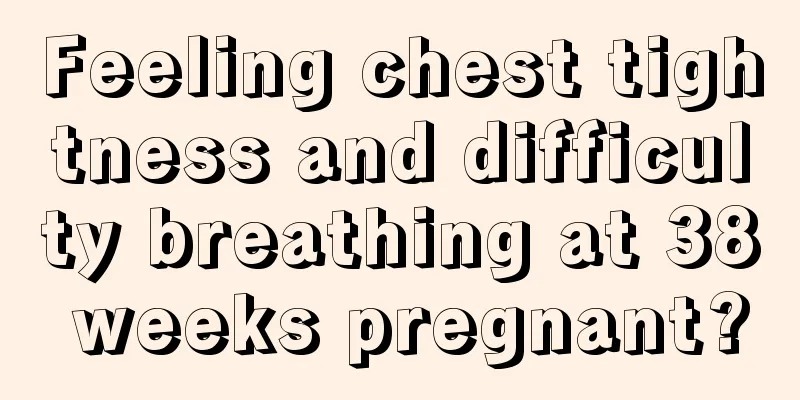Is it bad if the follicle is too big?

|
For women who want to have children, they are very concerned about the development of follicles. Only when the follicle is mature can it meet the sperm and form a fertilized egg, and finally achieve the effect of the fertilized egg implanting and gradually developing. If the follicle is too large, it is not a bad thing, and the ovulation time will not be too long. For women, they must seize the better time to conceive. Let's take a look at this aspect. Is it bad if the follicle is too big? It's not that it's completely bad. Because the follicle is ovulating, it becomes larger. Ovulation doesn't last too long, sometimes it's just a moment. Only after the egg is released can it have a chance to combine with sperm and become pregnant. Developmentally dominant follicle The primordial follicle is composed of a large primary oocyte and a single layer of flat follicle cells surrounding it. There are about 1 million primordial follicles in the ovarian cortex of newborns, but most of them cannot reach the mature stage. They atrophy and degenerate one after another to form atretic follicles. The development of primordial follicles into growing follicles does not require hormonal regulation. What are the criteria for a dominant follicle? The primary oocyte of a growing follicle is enlarged, and significant RNA and protein synthesis occurs within the cell. After the follicle cells become cubic or columnar, they rapidly proliferate into multiple layers. A thick membrane is formed between the oocyte and the follicle cells, called the zona pellucida, which is a gelatinous glycoprotein complex. Under the electron microscope, the microvilli on the surface of the oocyte and the protrusions of the follicular cells can be seen extending into the zona pellucida, which is beneficial for the follicular cells to transport nutrients to the oocyte. The zona pellucida plays an important role in identifying sperm species and preventing polyspermy. The follicular cells continue to proliferate, and the small cavities between the follicular cells gradually fuse into a larger follicular cavity, which is filled with follicular fluid containing hyaluronic acid, estrogen and nutrients. The criteria for the dominant follicle: As the follicular fluid continues to increase and the follicular cavity continues to expand, the oocyte and some of the surrounding follicular cells are squeezed to one side of the follicle and protrude into the follicular cavity, which is called the cumulus ovum. The remaining follicle cells that make up the egg wall are densely arranged into several layers, called the granulosa layer. A layer of columnar follicle cells close to the zona pellucida, arranged radially, is called the corona radiata. The connective tissue around the follicle forms two layers of follicle membranes. The inner layer has more cells and is rich in capillaries. The inner layer cells and follicular cells work together to secrete estrogen; the outer layer has more fibers. Starting from puberty, several to dozens of follicles grow and develop in each cycle, but only one follicle matures, occasionally two, and the rest are atretic. |
<<: Chest pain when wearing underwear
>>: How long does the ovarian follicle survive after it is expelled?
Recommend
Pregnant woman's hands itch
Every pregnant woman is very concerned about her ...
Regarding the issue of corpus luteum rupture, those who stay in bed and hold their urine on weekends should pay attention
The alarm hasn't rung yet, but you've bee...
What should I do if I have an ectopic pregnancy for two months?
Being pregnant is supposed to be a very happy thi...
Can I get pregnant if I have chronic gastroenteritis?
Some female friends may want to get pregnant, but...
Breakthrough in sleep medicine: The brain consolidates positive emotions in dreams
Processing emotions, especially distinguishing da...
What are the mandatory items to be checked during the first prenatal check-up?
When it comes to prenatal check-ups, everyone kno...
Things to note before transplantation, pay attention to all aspects
Every woman has the right to be a mother. Some fa...
What if my period doesn’t end after 13 days?
As we all know, women's menstruation usually ...
Reference values of six hormones during menstruation
Menstruation is a normal menstrual cycle for wome...
What is the cause of pimples in women's breasts?
Women's breasts are very important, especiall...
Side effects of taking painkillers during menstruation
Menstrual pain is a major problem that modern wom...
Causes of chocolate cysts
As a woman, I think the most difficult thing for ...
What do online games do to our brains?
You may really like playing online games, or you ...
Is it good for pregnant women to drink seaweed soup?
There is a saying that goes, every day a living l...
How to deal with contact vaginal bleeding
Vaginal bleeding in women is generally caused by ...









